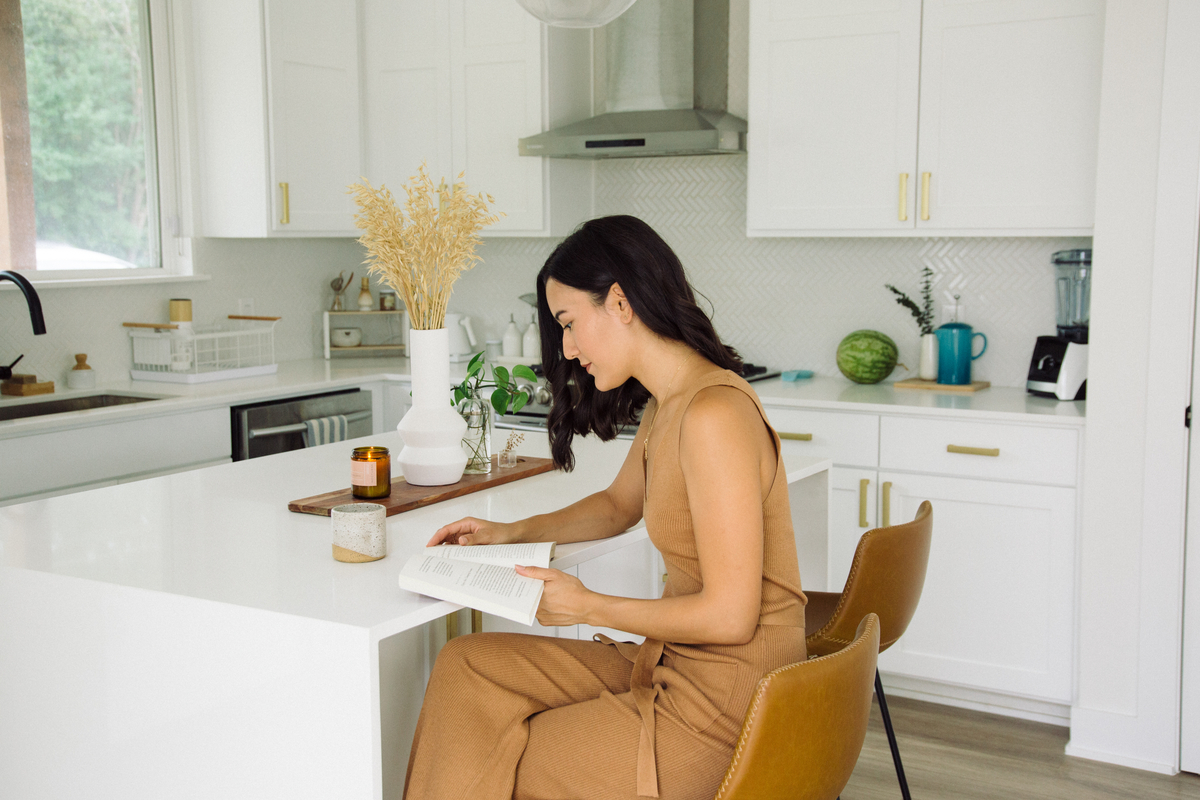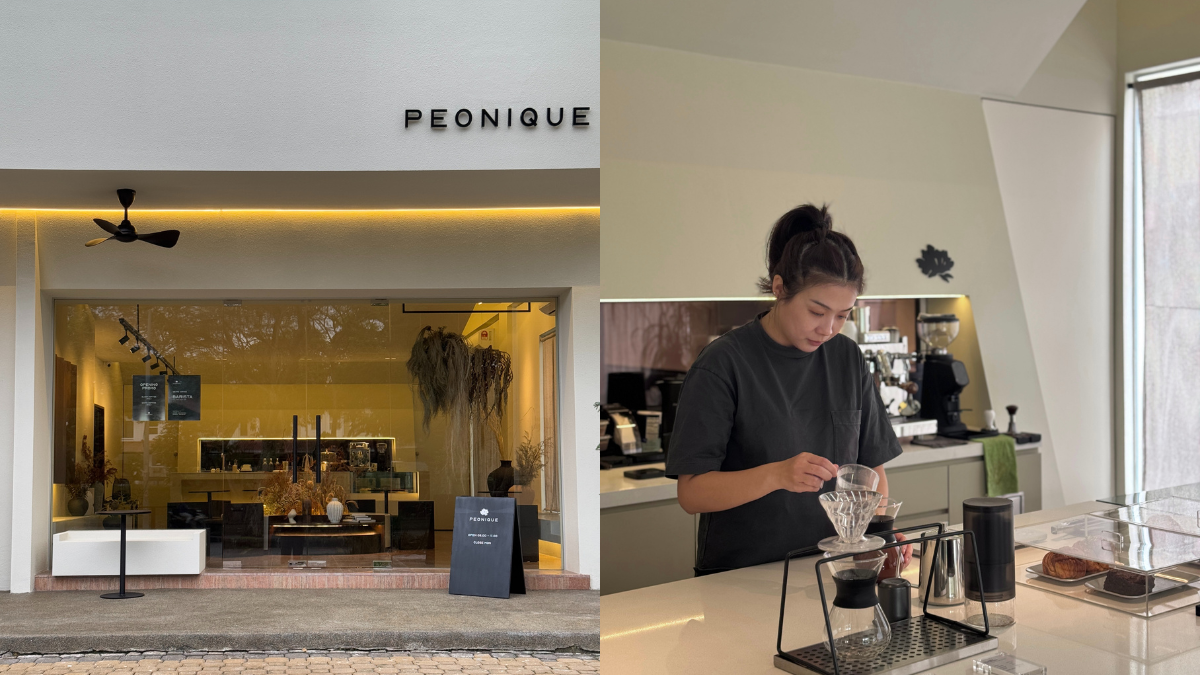Creating a Home That Feels Like You—How to Design With Intention
It’s not about perfection. The post Creating a Home That Feels Like You—How to Design With Intention appeared first on Camille Styles.
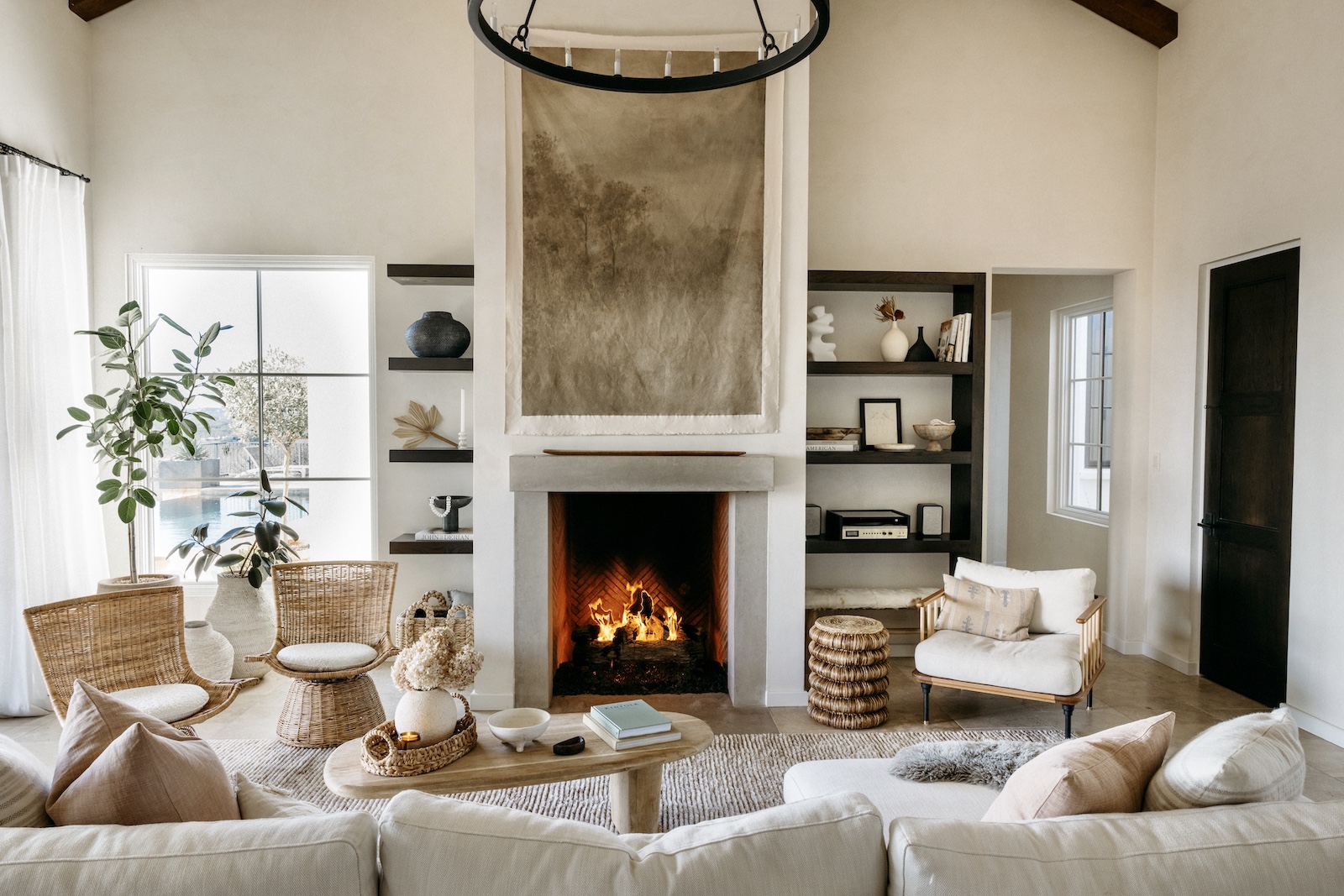
Over the last few years, I’ve come to think of designing my home as a key component to my overall wellness (if it sounds like a stretch, stay with me.) By crafting a home that reflects what’s meaningful to each of us, we can create an energy that empowers us to live more authentically, joyfully, and carefree. It doesn’t happen all at once—designing a home that we truly love takes time. When we learn to make design decisions that are rooted in how we want to live and feel when we’re at home, our physical surroundings can be a powerful catalyst for our overall well-being.
Since spring is bursting with clean slate energy, it feels like the perfect time to bring more intention to the items I live with each day. As trees burst into bloom and the sun imbues a fresh light to everything around me, I have fresh eyes to look at my home and take stock of how well it’s supporting the life I want to live.
For today’s post, I teamed up with Woven, one of my favorite brands for its natural materials and thoughtfully-crafted designs. As their site reads, “Home is somewhere between a place and a feeling,” and I couldn’t agree more. Read on for a few ways to make your home feel expansive, joyful, and uniquely you.
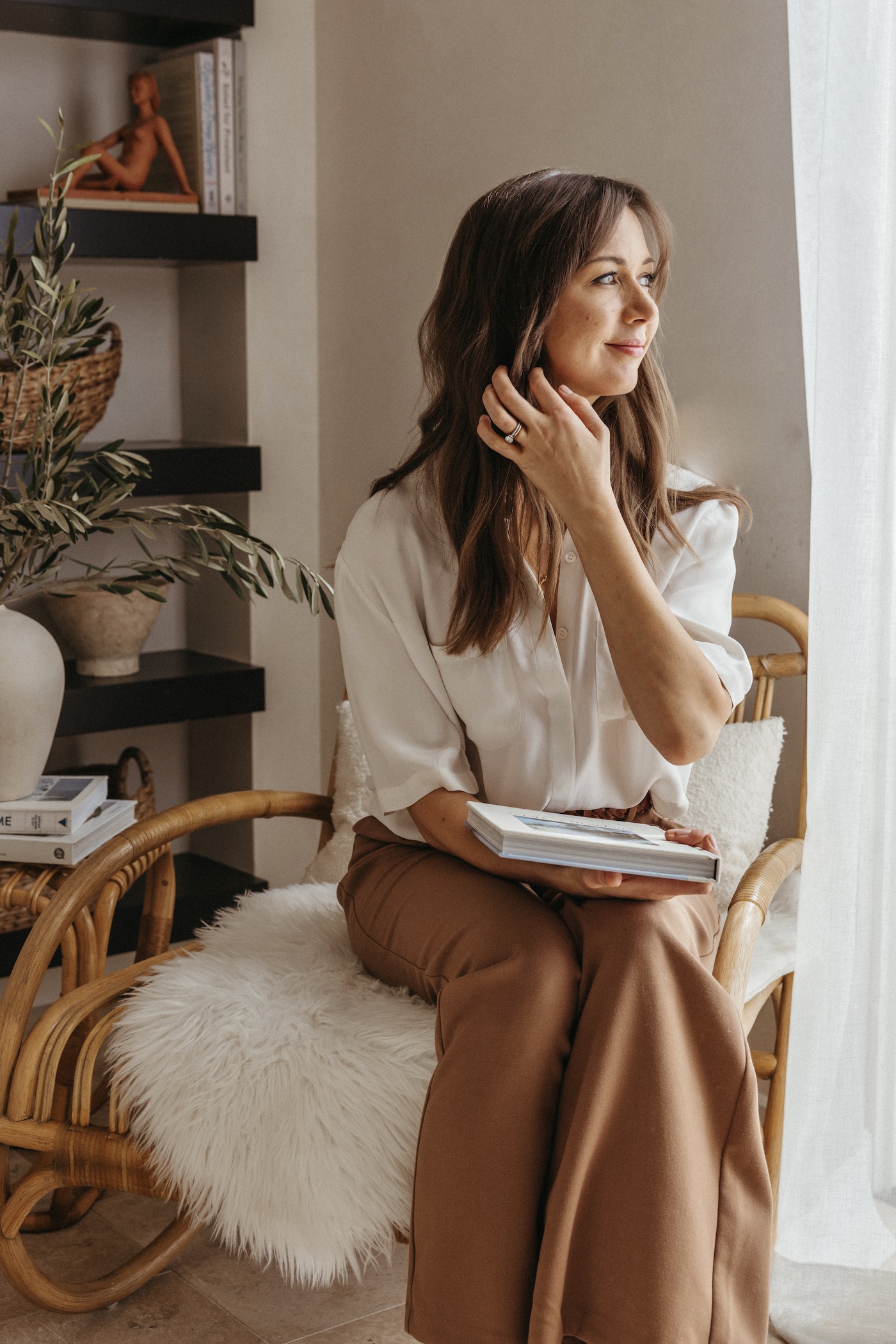

Subscribe
Get the goods.
Gatherings, food, design, wellness, and more—it's the newsletter you'll actually want to read.
Thanks for Signing Up!
Oops!
Looks like you’re already signed up or your email address is invalid.
Oops!
Looks like you unsubscribed before click here to resubscribe.
Write Down Your Values
Home is so much more than the way a room looks. For me, home is the unmistakable comfort of climbing into my own bed after being away for a few days. It’s a sigh of relief, the hug of a soft blanket, an invitation to let my guard down and just be myself.
As our family prepares to start renovating our beach house, I’ve been thinking about how to infuse this sense of warmth and comfort into every detail of our plans.
I have a deep desire to live more abundantly with less stuff, and to discover more simplicity and openness in all aspects of life. I know that I want to be surrounded by natural elements, and to create cozy intimate spaces that support meaningful conversation.
Once I defined that my priority for my home is to create authentic, unhurried experiences with the people I love, it informed so many of my design decisions. If you’re just beginning your own journey of defining your own at-home values, here are a few prompts for self-reflection to get you started:
When I’m at home, I want to feel… I feel calm when… My life feels meaningful when… The colors that I connect with most are…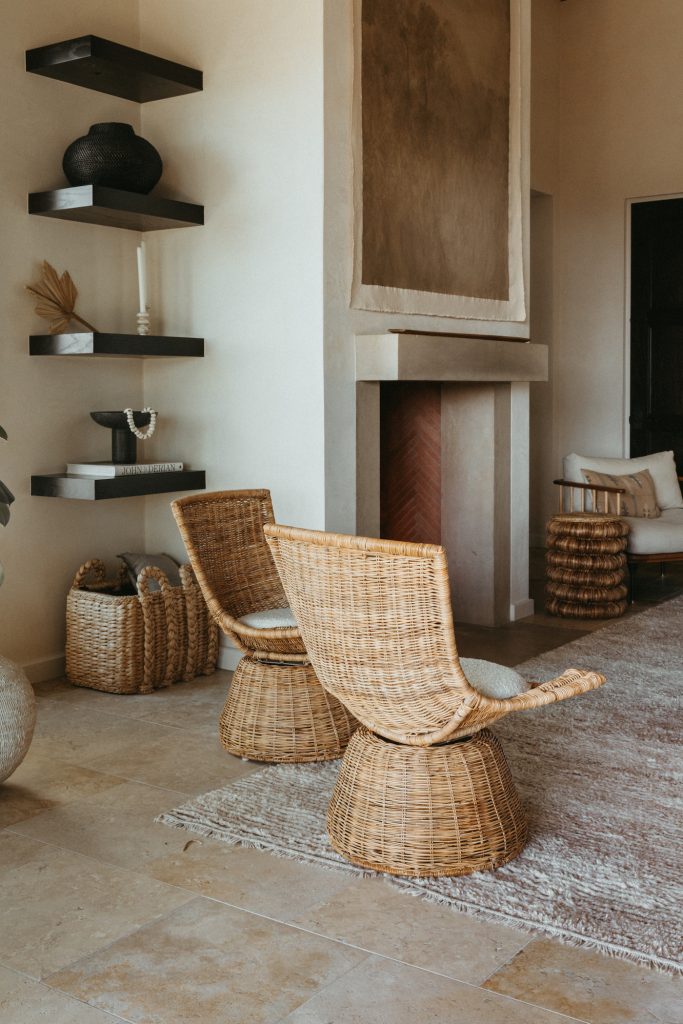
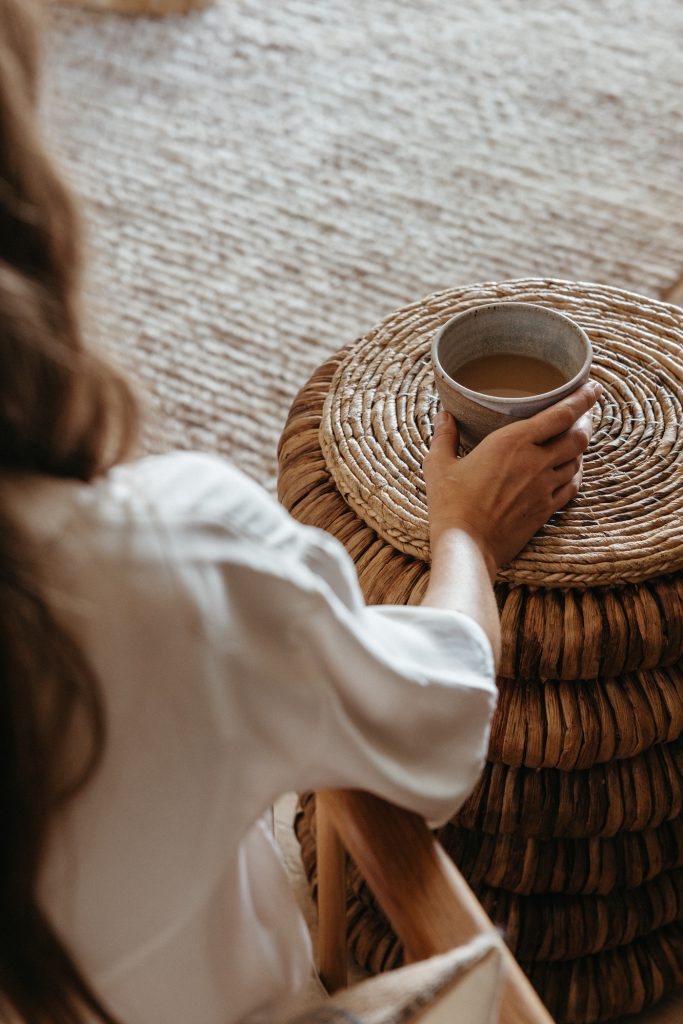
Nature Is the Greatest Inspiration
We all instinctively respond to the beauty of nature. The sound of the ocean or a river has been proven to change our brain waves’ frequency and put us in a more meditative state. Being in a forest activates the parasympathetic nervous system, which makes us more relaxed.
In my at-home spaces, I’m always looking for ways to harness these wellness-boosting cues by choosing pieces for the house that bring the outside in. I usually stick to an earthy color palette that recalls the beaches and mountains that always make me feel more at peace, and I incorporate as many natural materials as possible–raw clay tile in the bathrooms, woven light fixtures, rattan furniture pieces, and wood cabinetry to create a beautifully textured effect.
One of the best ways to surround ourselves with nature every day is to incorporate furniture that’s made of natural materials. Here are some of my favorites:
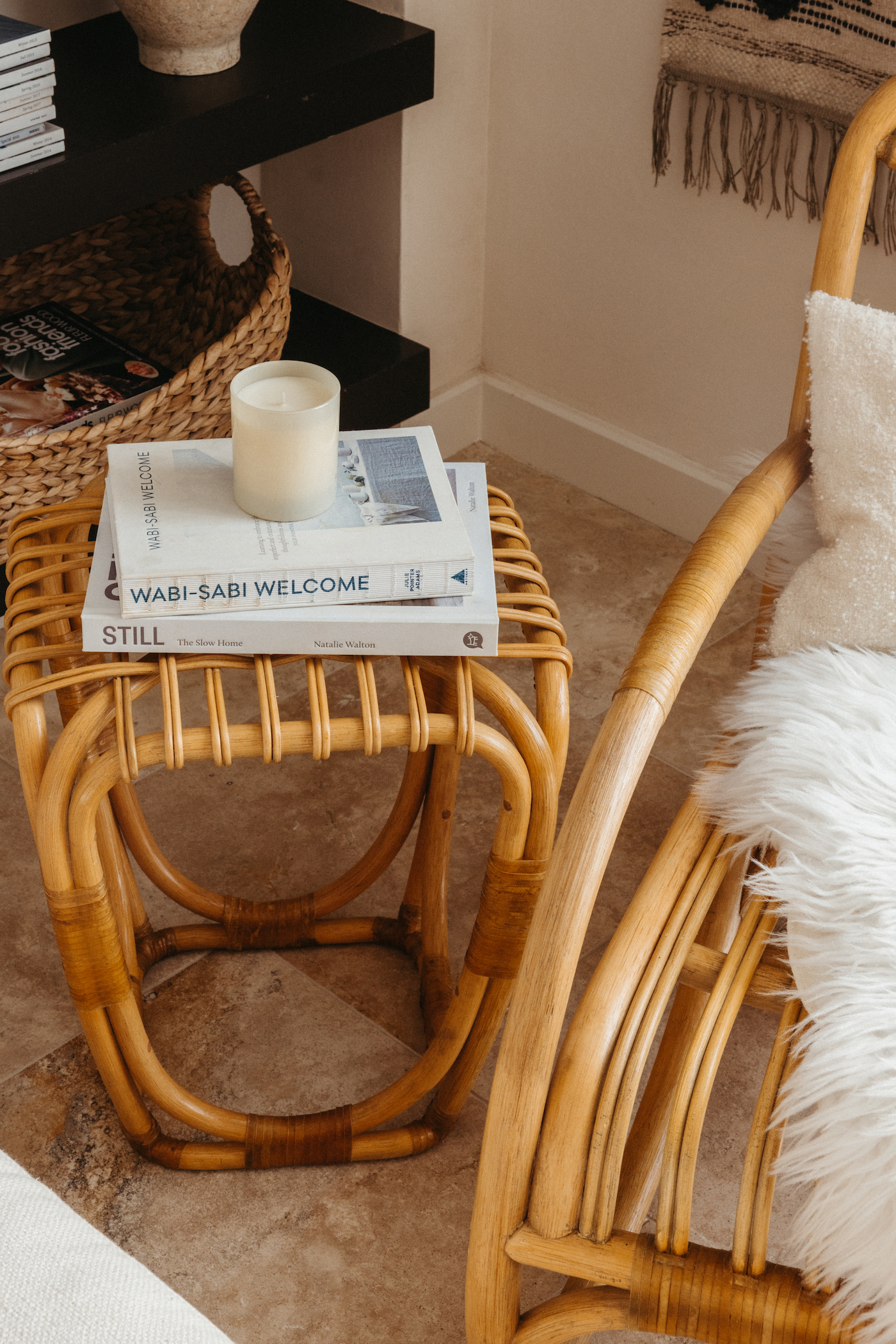
Rattan
Rattan has been used for centuries and is a completely sustainable and environmentally friendly material—it can be fully grown and harvested within two years (compared to other hardwoods which can take up to 20 – 30 years.)
Wicker
Wicker is actually the oldest known method of making furniture, dating back to the Egyptians! It’s a process of weaving that can be made from any natural material, often rattan, bamboo, or willow.
Water Hyacinth
I love this coffee table from Woven that pays homage to the indigenous roots, artisanal techniques, and distinctive style that emerged through the trading routes of Sante Fe. And, it’s woven by hand from water hyacinth, an incredibly sustainable material that’s used by artisans around the world.
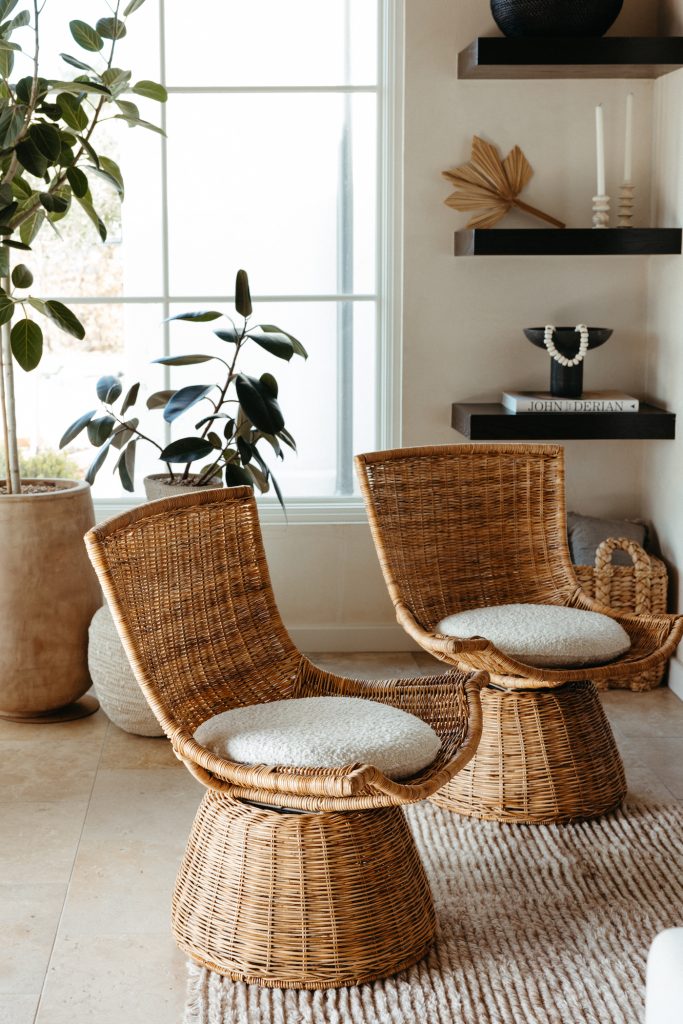
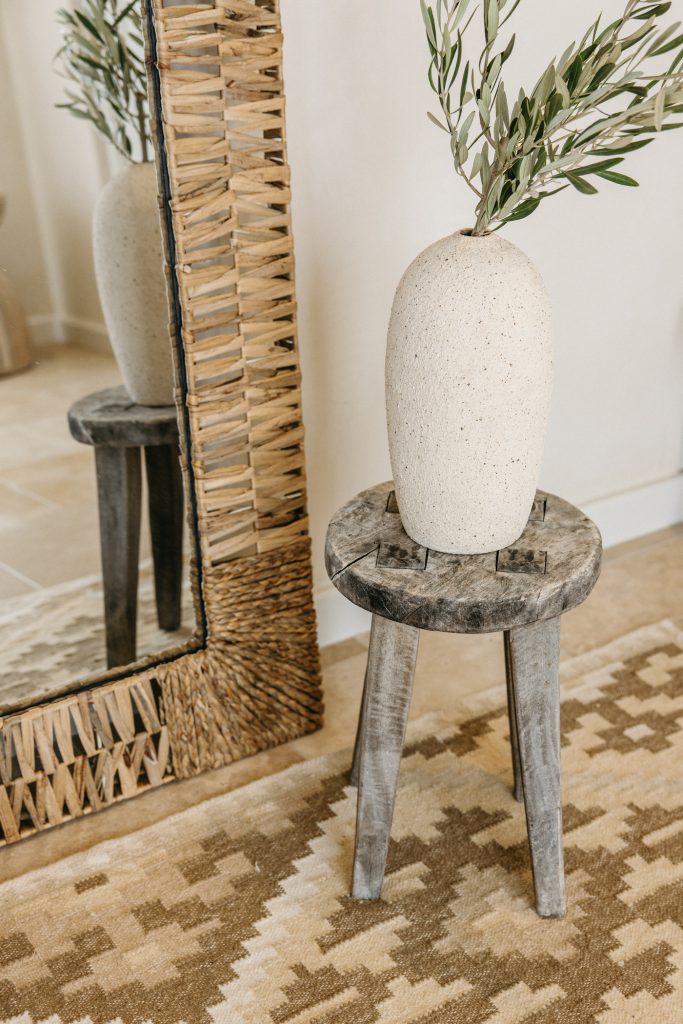
An Abundant Life Is Often Built on Less
A minimalist aesthetic doesn’t mean it has to feel cold or spare—my design approach is based on “warm minimalism” that incorporates lots of texture and materiality to make a home feel cozy. I’ve found that when I have less stuff, I often discover more joy in the things I do have. It’s an approach that’s not built on trends; rather it’s slowly building a collection of pieces that speak to you, being thoughtful about each of your purchases. Here are a few characteristics that define this more organic approach to minimalist design:
Less clutter
Clear out the things you never use or that don’t spark joy. It’s amazing how a little decluttering makes a space feel more expansive.
Repair or repurpose what you can.
There’s a certain joy that comes from giving an old piece new life. Instead of immediately discarding an old or broken item, ask yourself if it can be repaired, displayed, or used in an unexpected way. The beauty of vintage pieces is rooted in repurposing something old to bring life and soul into a newer space.
Lean into natural earth tones
When I first started my own home decorating journey, I always heard that you should add a “pop of color” to every space. I obediently followed the rule, but then noticed that the pop of color always ended up unsettling me. I’d move around that pink pillow or blue vase until finally, I gave up and put it away in a closet. Once I embraced the fact that I feel most at ease surrounded by natural hues, my home felt so much more like me. A natural linen couch, woven rattan chair, an all-white bed—they feel like a breath of fresh air and allow me to really relax in a space.
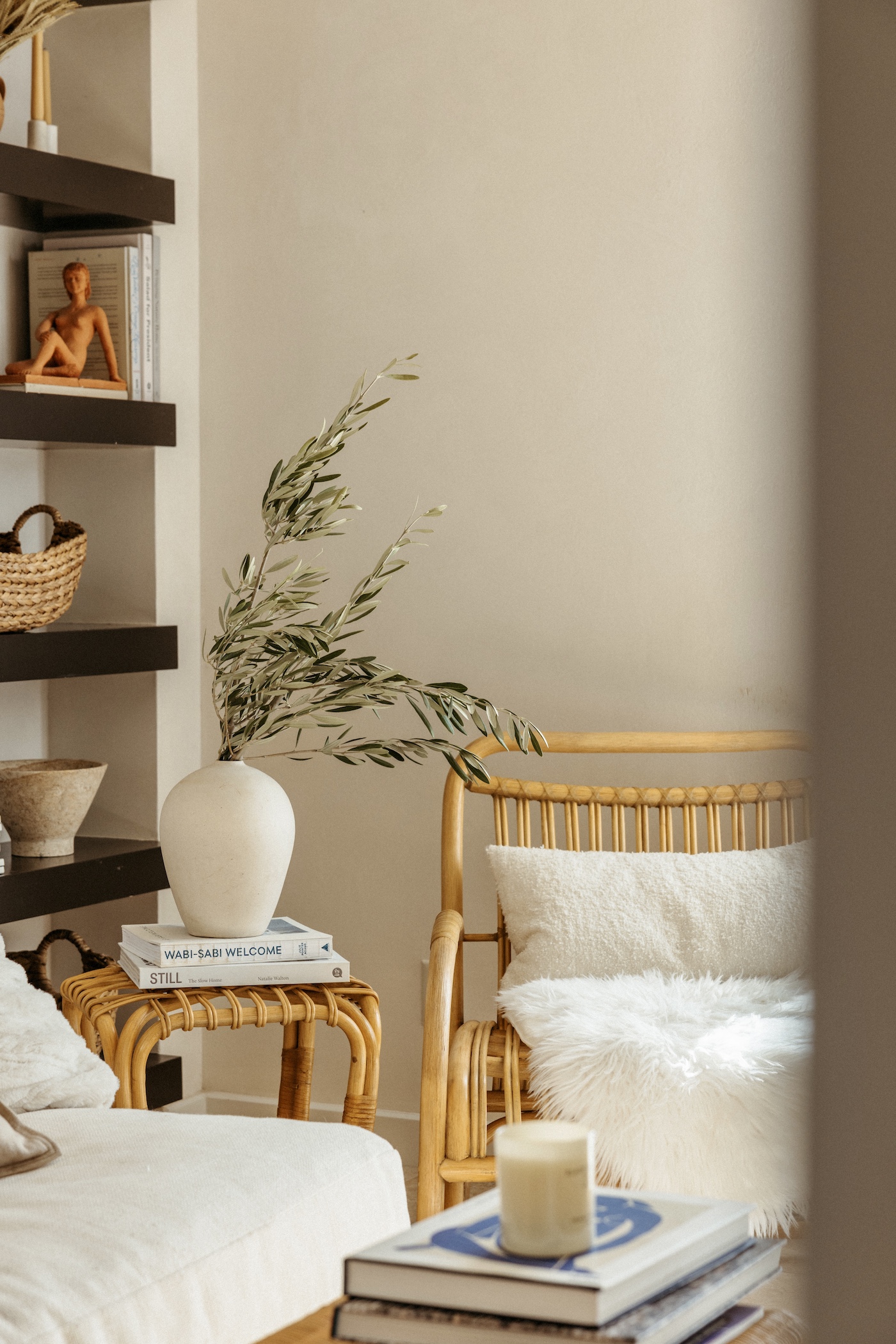
Embrace the Imperfect
The realization that our homes are ever-changing and never “done” relieves the pressure of making everything perfect from day one. I’d rather slowly choose the pieces that speak to me, even if that means leaving a little breathing space in some of the rooms until I find that just-right chair or piece of art. It’s not about impressing anyone, rather it’s about the great conversation and the richness of life when we feel aligned with our authentic selves.
The Japanese concept of wabi-sabi is about celebrating the imperfect—finding beauty in the unexpected, and paying attention to the small wonders that we encounter everyday (when we’re not too busy to notice.) Often, it’s just watching for those pieces that make my heart beat a little faster. It could be a beautifully rumpled linen napkin, or an unlacquered brass faucet that gets better with age. It’s these juxtapositions of new with old, polished with raw, smooth with rough that gives a home its soul.
***
This values-first approach to creating my home has helped me reprioritize the things I purchase, letting go of the “rules” I once followed and instead putting comfort and connection at the center. Instead of just another Pinterest-worthy space, my bedroom has become my sanctuary, the dining table a place for real-life connection. It’s a journey that I know will keep evolving, just like me.

 FrankLin
FrankLin 







